ARYA AUDIO LABS RevOpods Damping Feet by Ron Cook
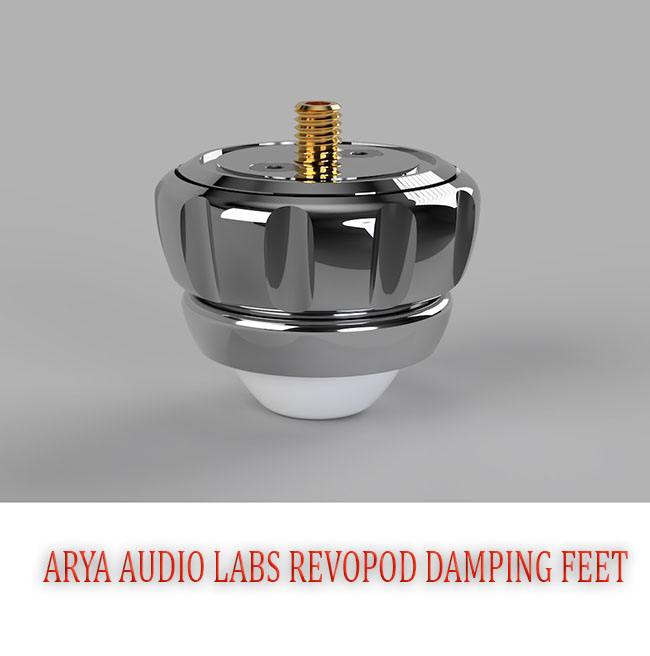
INTRODUCTION
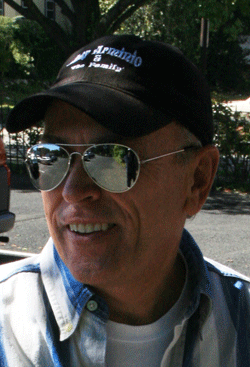 It has been some time since I reviewed the Tekton Ulfberht Loudspeakers for this publication. I have incorporated several tweaks in my system that significantly enhanced its performance in that interim. One impactful tweak was installing the Quantum Science Audio series (QSA) Red/Black fuses. QSA fuses have been reviewed at length here, so I will add that their praises have been justly deserved based on my own experiences. I also moved to a new home a little more than a year ago, and it took some time to get everything in the system dialed in and settled. Lately, I have been listening to and enjoying the most pleasing sound I have ever experienced in my own home. Until………….
It has been some time since I reviewed the Tekton Ulfberht Loudspeakers for this publication. I have incorporated several tweaks in my system that significantly enhanced its performance in that interim. One impactful tweak was installing the Quantum Science Audio series (QSA) Red/Black fuses. QSA fuses have been reviewed at length here, so I will add that their praises have been justly deserved based on my own experiences. I also moved to a new home a little more than a year ago, and it took some time to get everything in the system dialed in and settled. Lately, I have been listening to and enjoying the most pleasing sound I have ever experienced in my own home. Until………….
BACKGROUND
At this point, I will confess that, while I am not unaware of the importance of eliminating unwanted vibration to the extent possible in one’s system, it is the area in which I have invested the least amount of funds and time. Again, being SO happy with the performance of my system, I wasn’t feeling any pressure to do anything further. I was in that rarified state of bliss where I felt that “it just can’t get any better than this.” That said, I have felt that way before only to be proven wrong, i.e., it CAN get better and, so, I remain open to new possibilities.
Recently, I happened to be flipping through the pages of an issue of The Abso!ute Sound when I came across an ad that listed the dealers who carry the advertised product. I noticed that one was located near my home, unbeknownst to me. Since there are “next to none” when it comes to dealers in my area who can demonstrate high-end equipment, I jumped at the chance to get a “listening fix” and arranged a visit. He demonstrated a very impressive premium system and featured the Wadax Reference DAC (which retails for a lofty $145,000). I also noticed that the Wadax pieces, as well as the other electronics in the system, were all resting on very attractive chrome-like “feet.” The dealer and I had a very informative discussion about these “feet” and their contribution to what I was hearing. Based on that conversation, I borrowed a set of four and went on my way. The results follow.
THE RevOpods
Let me now introduce the RevOpods
The RevOpods are damping feet, made by the British company Arya Audio Labs and distributed in the U.S.A. by Liquid Hi-Fi in Fort Mill, South Carolina. Their purpose is to dissipate vibration in audio components by supporting them on the RevOpods. The technical explanation of how they do this is quite interesting and can be found at www.revopodusa.com. Typically, RevO pods replace the component’s feet, but other options are described below.

Each RevOpod is a virtual instrument built from 35 individual parts. The structural parts are machined from stainless steel billets, and the whole assembly is exact with very tight tolerances. In order to provide for precise leveling of the component, each RevOpod also may be adjusted for height using a ring that rotates in 50-micron steps. A Delrin insert couples the RevOpod to the component’s surface. Four RevOpods make up a set and come with thread adapters in three sizes to allow for different threaded inserts. If the component does not have threaded inserts – or none of the three adapters fit – the manufacturer recommends placing the component directly on top of the RevOpods with the flat part resting on the surface that holds the component. Since the threading on my Behold BPA768’s feet was not compatible, this alternate arrangement worked perfectly. You can feel the substance and quality of the RevOpods when you hold one in your hand. They are almost jewel-like and come in different color combinations, allowing them to complement any component’s appearance.
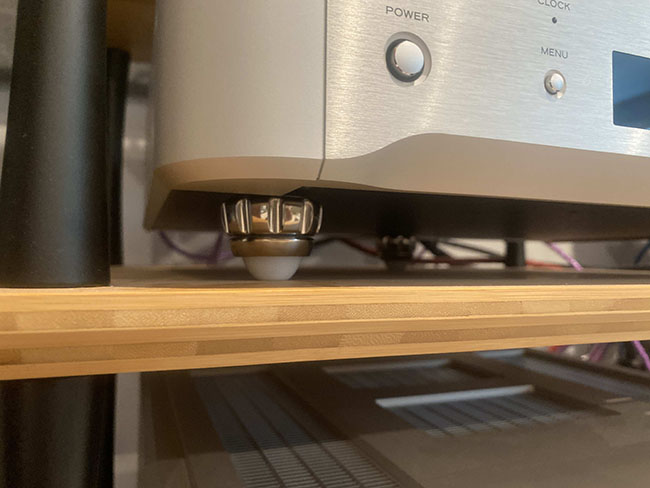
I installed the four RevOpods under my Behold BPA768 stereo amplifier and began listening. Before continuing, let me say that whenever I change anything in my system, I am almost holding my breath when I begin to listen. In most cases, my reaction is, “well, I think I hear an improvement, but I’m going to have to give this more time before I’m sure.” In rare instances, my reaction has been more like “WOW, OMG, this is incredible, what an improvement,” etc., etc. My immediate reaction to the RevOpods was in the “WOW” category! It took no longer than a few seconds to hear the significant performance improvements.
Before going into detail as to these improvements, I’m going to jump ahead to the conclusion that there was no way the RevOpods were ever leaving their place under my amplifier. Moreover, I acquired additional RevOpods, which reside under my Laufer Teknik Memory Player 64, Behold APU768 Preamp, and Puritan AC conditioner. Placing them under each additional component brought more and more of the same benefits, and the remainder of this review describes the system with the RevOpods under all the components.
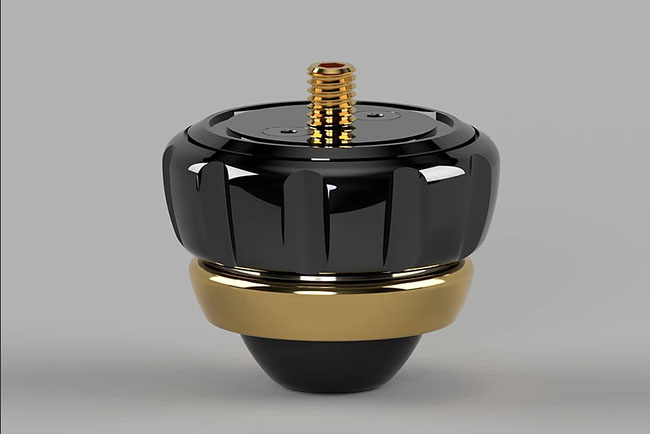
THE LISTENING CONTINUES
So, what sonic results transformed my listening experience to such a surprising degree? Essentially this – virtually every category of audio performance was noticeably improved! Tonal color, transparency, clarity in the midrange, bass extension and resolution, low-level detail retrieval, spaciousness and ambiance, dynamics, etc., ALL Improved!
Keep in mind, dear reader; my components had been (and still are) resting on various “audiophile” bases. Yet, there was simply no denying the fact that, until now, they had been suffering the effects of vibration. These effects were audible and obscured the detail, which is critical to the system’s ability to fool you at times into thinking you are hearing the “real thing.” Here are some specifics. Over the years, I’ve realized just how much a system’s bass response influences the system’s overall performance. The Ulfberhts can produce prodigious amounts of bass, given that it’s present in the recording. At times, I wondered whether it was too much of a good thing, perhaps influencing the sound of other instruments or vocalists? With the RevOpods in the system, that concern has been banished! Not only is the bass more profound, but the depth and power are more discernable because it is so much more resolved and cleaner. Whether electric or acoustic, bass instruments now sound as close to “real” as any reproduced bass I have ever heard. One of my favorite tracks that serve as a good example is “Thanks To You” by Boz Scaggs. The deepest bass notes on this track had already shaken my room, but I always thought that this one particular, ultra-deep note was one continuous low-frequency tone. Not so. Now, I can “count the cycles” in this note to feel and hear.

It is, however, in the midrange where most of the music lies, and listening to music with the RevOpods installed has been a revelatory experience. For example, on recordings of every genre, lead vocalists are more “there” in a way that is almost 3D-like – i.e., more like a holograph as opposed to a photograph. While previously they might have appeared on the same plane as the band, they now step forward into the limelight the way a soloist should. I have not previously heard this spatial presentation, and the effect is mesmerizing. An excellent example of this phenomenon is one of my favorite go-to tracks, Rickie Lee Jones’ “Comin’ Back To Me.” In the past, Rickie Lee appeared to be “stuck” in the same box (or booth) as the instruments. Now, she is essentially floating in her own acoustic space above and apart from them.
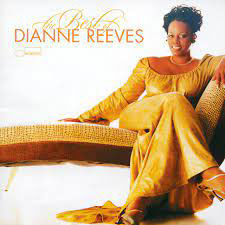 Another excellent example is “River – Live in Los Angeles” by Dianne Reeves. The track opens with a piano, then bass, followed by the background singers – who seem to have taken several steps back in the soundstage – so that when Dianne “appears,” she seems to have taken a step or two forward on that stage. Incredible! At the same time, the bass is more robust yet, more refined and defined, and the entire presentation has an increased clarity that reveals more nuance in the performance.
Another excellent example is “River – Live in Los Angeles” by Dianne Reeves. The track opens with a piano, then bass, followed by the background singers – who seem to have taken several steps back in the soundstage – so that when Dianne “appears,” she seems to have taken a step or two forward on that stage. Incredible! At the same time, the bass is more robust yet, more refined and defined, and the entire presentation has an increased clarity that reveals more nuance in the performance.
I also found that this increase in clarity, resulting from the elimination of vibration-induced “noise,” gives the impression of having more power available from the amplifier, as if it had been turbocharged. The result is a much more relaxed feel that allows, perhaps even encourages, you to turn up the volume and hear what the track sounds like. Sounds seem to “pop” from a dead-silent blackness in a way that is sometimes downright spooky. By the way, my experience is that unless you achieve a certain level of volume, you are not going to simulate something that sounds real since live instruments themselves create a certain minimum volume. The relaxed sound clarity with the RevOpods allows you to use the volume level at which the music “comes alive” without causing any aural distress. My wife remarked on this when listening to one of her favorite tracks, “How Do You Keep The Music Playing” by Michael Feinstein from his live recording, Romance on Film. The track opens with a musical intro beginning with piano, then adds bass, trumpet, saxophone, and drums, each in its own acoustic space. When Michael’s voice “appears,” it is, again, floating in its own space, distinct from the instruments and has this 3D roundness to it which it did not in the past. By the way, this holographic sensation is not confined to voices. Instruments, regardless of the size of the band or orchestra, are heard with this same sonic benefit.
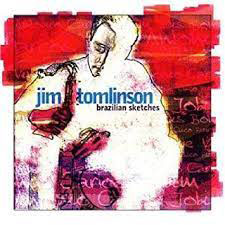 Another example of a vocalist “stepping out” of the mix is the tune “So Nice” sung by Stacey Kent from the CD Brazilian Sketches by Jim Tomlinson. Over the years, I have used this track countless times in evaluating various gear. I have NEVER heard it like this. The ambiance is incredible, and the effect is like hearing an old recording that has been remastered and reissued in a hi-res format. The RevOpods have also allowed me to enjoy the sound of a full orchestra to a much greater extent. Take Copland’s “Fanfare For The Common Man” with Louis Lane conducting the Atlanta Symphony Orchestra. The opening crash of the gong is so startling it is almost scary and is followed by bass drum strikes that are thunderous. You feel them and hear them – just like the real thing. Brass instruments have a full-bodied weight with just the right amount of “bite” to their sound, and the ability to discern individual instruments is much enhanced.
Another example of a vocalist “stepping out” of the mix is the tune “So Nice” sung by Stacey Kent from the CD Brazilian Sketches by Jim Tomlinson. Over the years, I have used this track countless times in evaluating various gear. I have NEVER heard it like this. The ambiance is incredible, and the effect is like hearing an old recording that has been remastered and reissued in a hi-res format. The RevOpods have also allowed me to enjoy the sound of a full orchestra to a much greater extent. Take Copland’s “Fanfare For The Common Man” with Louis Lane conducting the Atlanta Symphony Orchestra. The opening crash of the gong is so startling it is almost scary and is followed by bass drum strikes that are thunderous. You feel them and hear them – just like the real thing. Brass instruments have a full-bodied weight with just the right amount of “bite” to their sound, and the ability to discern individual instruments is much enhanced.
Solo instruments are also presented with incredible detail. Take the 1983 recording of the “Bach: Unaccompanied Cello Suite No. 1 in G Major, Prelude” by Yo-Yo Ma. The sound of the hall’s ambiance is perfect, and you can hear/feel the pressure of his hands as he uses his bow to create the glorious tone of his cello. It is so realistic that the sensation is one of witnessing a performance instead of listening to a recording.
I also listen to lots of jazz music. One of my favorite tracks for the artists’ performances and demo-quality sound is from the CD I Like Jazz. The tune is “The Nearness Of You,” featuring Branford Marsalis on tenor sax with bass and drums completing the trio. The sound of his sax is extremely realistic, as is the sound of the other instruments. When the bassist begins playing, he uses a bow before changing to finger plucks, and the resinous sound he gets with the bow is very lifelike.
 Another jazz favorite is “Lament,” featuring Chet Baker on trumpet, accompanied by guitar and bass. If you are like me, when I experience new gear, which sounds great, I tend to quickly jump from one track to another, trying to hear as much as possible in as little time as possible. Not so with this track – I listened to all 11-minutes since I was so captivated by the natural sound (recorded live in a club, although the quality is so good that it sounds more like a studio recording). When Chet finishes his opening solo, the crowd bursts into applause and the sound is so realistic; I felt I was in the club with that crowd and should applaud as well. These are the special moments in our hobby that make it all worthwhile.
Another jazz favorite is “Lament,” featuring Chet Baker on trumpet, accompanied by guitar and bass. If you are like me, when I experience new gear, which sounds great, I tend to quickly jump from one track to another, trying to hear as much as possible in as little time as possible. Not so with this track – I listened to all 11-minutes since I was so captivated by the natural sound (recorded live in a club, although the quality is so good that it sounds more like a studio recording). When Chet finishes his opening solo, the crowd bursts into applause and the sound is so realistic; I felt I was in the club with that crowd and should applaud as well. These are the special moments in our hobby that make it all worthwhile.
A more contemporary jazz sound can be heard on “Walking On The Moon” by the Yuri Honing Trio. The attack of the drums as they open the tune is as powerful, crisp, and clear as in real life, with cymbals that shimmer with absolutely no trace of harshness. As a drummer, I appreciate good drum sound, and this recording is quite good in that regard (you can even hear the natural ring of the snare drum shell perfectly). The saxophone has a mellow, robust sound which can also be raw when called for – as in real life. The bass is tuneful and powerful, perfectly complementing the overall performance. Live recordings come to life with the pods in the system. Sinatra At The Sands is a live recording that features a number of great tunes from the Sinatra songbook, accompanied by the fabulous Count Basie Orchestra. Listening to “I’ve Got A Crush On You,” I close my eyes, and I’m THERE!!
One thing that makes this sensation of “being there” so vivid is the additional retrieval of reverberant decay. Without the “fog” of vibration-induced noise, ambient information is readily and effortlessly heard, to a much greater extent than had been before. The effect is almost like having a “soundstage expander” turning up the width, depth, and height. This effect greatly enhances the ability to hear into that expanded space and allows one to identify the instruments and vocalists within more clearly. The effect is a substantial increase in the sense of being drawn into the performance. One is simply more connected to the performers and the music itself.
CONCLUSION
Every so often, a product will shock me in terms of the level of improvement it makes in the performance of, and more importantly, enjoyment of, my audio system. The RevOpods are one such product. Now, I’m relatively certain that many of you have taken steps to eliminate the undesirable effects that vibration may have caused in your system. If you believe you have succeeded, more power to you. If you have not seriously addressed this issue or to the extent that you might seek additional improvement, I urge you to try the RevOpods. Frankly, I can’t imagine anyone placing the RevOpods under a component without hearing an improvement (which just might, as in my case, turn out to be startling). These devices should be considered as a component. They are that powerful in what they can do in a serious system. Since there is no way I would want to be without their benefits, I purchased the RevOpods and, obviously, highly recommend them!!


Ron cook
Specifications:
Price, $1,395 per set of four
Manufactured in London, UK
Website: revopodusa.com
Distributed by: Liquid Hi-Fi, Fort Mill, South Carolina
Ron Cook’s Associated equipment
Digital: Laufer Teknik Memory Player 64
Analog: VPI Aires TT, JMW Memorial tonearm, Benz Micro Ruby 2 cartridge, Behold phono stage
Amplification: Behold BPA-768 amplifier and APU-768 pre-amplifier
Loudspeakers: Tekton Ulfberht
Speaker Cables: Hemingway Creation S
Accessories and Tweaks:
Puritan line conditioner
Hemingway Creation power cables
Kemp M100 AC conditioner
Frank Acoustics Power Bank
IPC Acoustic Energizers
Stein Music Harmonizers
HighEnd Novum PMR
Argent Room Lenses
Bybee IQSEs
QSA Red/black fuses
QSA electrical outlets
One thought on "ARYA AUDIO LABS RevOpods Damping Feet by Ron Cook"
Leave a Reply
Stereo Times Masthead
Publisher/Founder
Clement Perry
Editor
Dave Thomas
Senior Editors
Frank Alles, Mike Girardi, Russell Lichter, Terry London, Moreno Mitchell, Paul Szabady, Bill Wells, Mike Wright, and Stephen Yan,
Current Contributors
David Abramson, Tim Barrall, Dave Allison, Ron Cook, Lewis Dardick, John Hoffman, Dan Secula, Don Shaulis, Greg Simmons, Eric Teh, Greg Voth, Richard Willie, Ed Van Winkle, Rob Dockery, Richard Doron, and Daveed Turek
Site Management Clement Perry
Ad Designer: Martin Perry









Excellent review. I have on set under my Dac, planning on getting 2 more sets. You can instantly hear the difference. Another upgrade I would like to try is the Swiss Digital Fuse Box. Word is, It will outperform ANY and ALL QSA Fuses or you could say ALL Fuses. It Bypasses them.